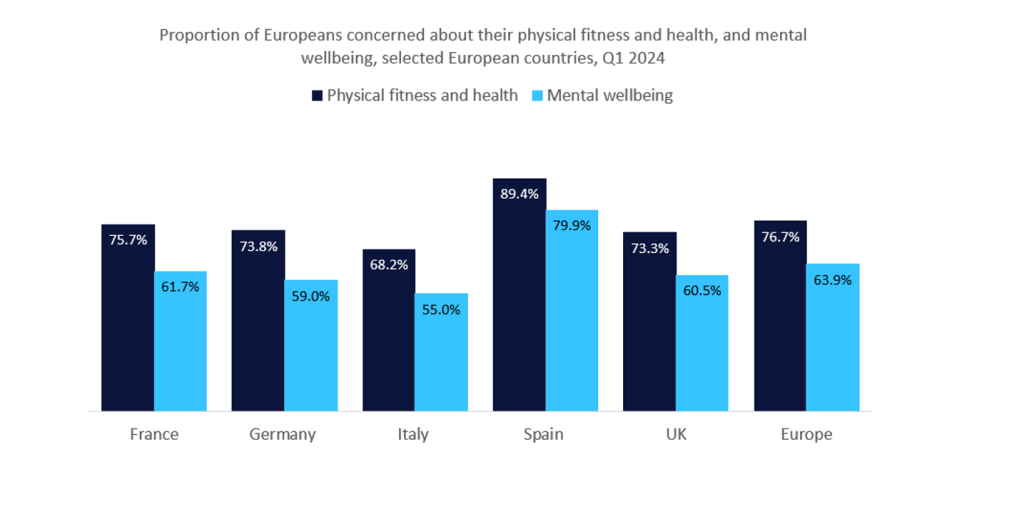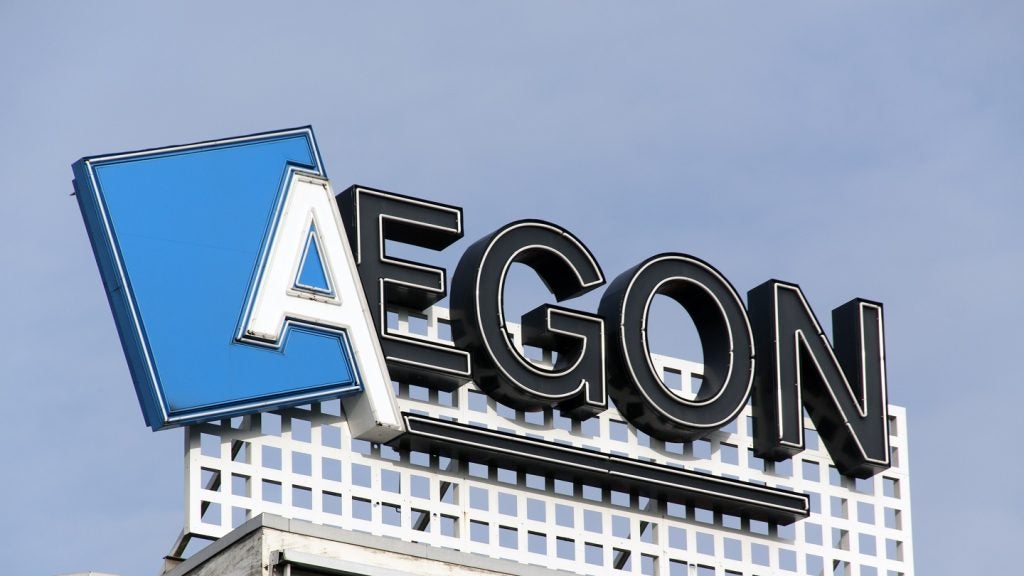Reversing a decade of market share
loss, state-owned Life Insurance Corporation bounced back in 2008
and 2009. The company has regained a significant amount of lost
ground from private insurers suffering a slump in demand for
unit-linked products and grappling with soaring losses and
margin-eroding legislation.
 India’s life insurance
India’s life insurance
industry can look back on a decade of remarkable growth which saw
annual premium income soar from INR517.08 billion ($11.1 billion)
in the fiscal year to 31 March 2002 to INR2.25 trillion in 2008-09,
a CAGR of 22 percent.
It was also a decade during which the private
life insurance sector – which came into being in 2000 – came to the
fore, increasing its premium income from a mere $61 million in
2001-02 to $14.1 billion in 2008-09, based on data from India’s
insurance regulator, the Insurance Regulatory and Development
Authority (IRDA).
In the process, private insurers increased
their share of total premium income from a marginal 0.5 percent in
2001-02 to 29.1 percent in 2008-09.
Of the 22 private life insurers currently
active in India, 21 have foreign partners – all holding the maximum
permitted 26 percent stake in joint ventures (JV) with local
partners.
How well do you really know your competitors?
Access the most comprehensive Company Profiles on the market, powered by GlobalData. Save hours of research. Gain competitive edge.

Thank you!
Your download email will arrive shortly
Not ready to buy yet? Download a free sample
We are confident about the unique quality of our Company Profiles. However, we want you to make the most beneficial decision for your business, so we offer a free sample that you can download by submitting the below form
By GlobalDataFour new life insurers began operating in
2008-09: Aegon Religare; Canara HSBC; DLF Pramerica; and Star Union
Dai-ichi. In November 2009, India First, a JV between UK insurer
Legal & General, Bank of Baroda and Andhra Bank became the
latest entrant into India’s life market. Sahara Life is the only
Indian life insurer that does not have a foreign partner.
Market share gains by the private life
insurance sector have been at the expense of the only state-owned
life insurer, Life Insurance Corporation of India (LIC) which, now
in its 54th year, saw its share of the total market being
aggressively eroded by private sector newcomers.
Based on its first-year premium income in
2008-09, the LIC held a 61.1 percent share of a total market of
INR869 billion. Five years earlier LIC’s market share was 95.3
percent.
Powering private life insurance sector growth
have been unit-linked insurance plans (ULIPs) first introduced in
2001 by Birla Sun Life, a JV between Canadian insurer Sun Life
Financial and Indian industrial conglomerate Aditya Birla
Group.
Indicative of the huge success enjoyed by
ULIPs, the IRDA reported that in 2007-08 ULIPs accounted for 88.34
percent of total private insurer sector premium income, a level
which fell marginally to 86.8 percent in 2008-09. ULIP investments
are generally weighted equally between equity and interest-bearing
assets.
Though LIC also made an early entry into the
ULIP market, launching its first ULIP product in 2001, the state
insurer continued to have a more diversified premium income spread
with traditional life insurance and endowment policies dominating
its new business.
According to the IRDA, LIC’s premium income
from ULIPs peaked at 31.6 percent of its total premium income in
2007-08 and declined to 22.1 percent in 2008-09.
For India’s life industry as a whole, ULIPs
accounted for INR906 billion, or 41 percent of total premium income
in 2008-09, down from 46 percent in 2007-08.
LIC regains lost ground
LIC’s business spread stood it in
good stead during the global financial crisis which took a heavy
toll on investment confidence among Indian consumers. Indicative of
the impact of the financial crisis, the Indian stock market’s
benchmark SENSEX Index fell 53 percent from its peak in May 2008
before bottoming out to its low in March 2009.
The investment market slump stunted demand for
ULIPs and halted the private insurance sector’s progress in 2009,
with the IRDA reporting that in the first eight months of 2009-2010
total first-year premium income recorded by private insurers had
fallen by 6 percent compared with the same period in 2008-09 to
INR189.08 billion.
Moving strongly against this weak trend, LIC’s
first-year premium income surged 44.5 percent to INR364.5
billion.
LIC’s strong showing left the industry’s total
first-year premium income up 21.3 percent at INR553.6 billion and
its market share at 65.9 percent – compared with 55.6 percent in
the first eight months of 2008-09.
Performance among private insurers was mixed
during the first eight months of 2009-10, with notable damage done
to some major players.
In particular, long-standing private sector
market leader ICICI Prudential experienced the most significant
fall in first-year premium income – down 28.6 percent compared with
the same period in 2008-09 to INR30.3 billion.
In the process, ICICI Prudential, a JV
established in 2000 by UK insurer Prudential and ICICI Bank, saw
its market share fall from 7.5 percent in 2008-09 to 5.55 percent
and its leadership of the sector lost to SBI Life, which recorded a
7.1 percent increase in premium income and a 6.37 percent market
share.
A JV between French bancassurer BNP Paribas
and India’s largest bank, State Bank of India, SBI Life was
established in 2006 and has moved up swiftly through the ranks of
private insurers, achieving third position in 2007-08 and second
position in 2008-09.
A strong finish
In tandem with stock markets
worldwide India’s market has recovered strongly since March 2009,
with the SENSEX Index having doubled in value. With this rise,
investor confidence has improved strongly and is being reflected in
a resurgence of demand for ULIPs.
According to industry body the Life Insurance
Council, surging demand for ULIPs saw new business premium income
in December 2009 surge by 75 percent compared with December 2008 to
INR122.01 billion.
Although the LIC remained in the forefront
with premium income up 80 percent, private life insurers enjoyed a
significant 64 percent increase in new business premium income to
INR44.7 billion.
SBI Life was among the private insurers that
enjoyed particularly robust growth in December, with new premium
income of INR4.28 billion up 118 percent compared with November
2009.
HDFC Standard, a JV between UK insurer
Standard Life and the Housing Development Finance Corporation of
India, recorded a 98 percent increase to INR3.91 billion, while
ICICI Prudential recorded an 87 percent increase to INR8
billion.
Profits illusive
Despite success enjoyed by private
insurers since 2000, profits remain generally illusive and rising
losses the norm. According to the IRDA, the private insurance
sector’s net loss after tax in 2008-09 totalled INR51.38 billion,
or more than $78,000 for every $1 million of premium income
generated.
Losses have also climbed sharply in recent
years, rising from INR11.8 billion in 2005-06 with only one
insurer, Shriram Life consistently showing a profit throughout the
period.
Established in 2005, Shriram Life is a JV
between Indian financial services company Shriram Group and South
African insurer Sanlam.
Losses in the private life sector contrast
sharply with LIC’s net profit which increased from INR6.3 billion
in 2005-06 to INR9.57 billion in 2008-09.
Notably, the IRDA reported that in 2008-09 the
private insurance sector’s total operating expenses were INR166.6
billion and the operating expense ratio (OER) at 25.8 percent.
The same year LIC’s operating expenses were
INR90.6 billion and its OER 5.76 percent. The OER is the ratio
between operating expenses and the premium underwritten.
Rising private life sector losses have been
driven by a scramble to expand distribution capacity. In terms of
private life sector brick and mortar presence, this has seen the
total number of offices operated by private life insurers increase
from 416 at the end of 2003-04 to 8,785 at the end of 2008-09.
The number of tied agents in the private life
sector has also grown significantly, rising from 196,473 at the end
of 2003-04 to just under 1.6 million at the end of 2008-09, a CAGR
of 52 percent. New business via the agent channel has fallen from
60.4 percent of total value in 2004-05 to 47.4 in 2008-09.
Contrasting with the rapid rise in private
insurers’ reach, the LIC increased the number of offices from 2,197
at the end of 2003-04 to 3,030 at the end of 2008-09, while the
number of agents remained unchanged at 1.34 million. LIC’s agents
accounted for 76.9 percent of its new business value in 2008-09
compared with 99.8 percent in 2004-05.
Private insurers also put the brakes on
expansion in 2009, with the number of agents rising by 91,000 in
the six months to 30 September compared with an increase of some
200,000 in the same period in 2008. The number of new office
openings also slowed markedly, from 1,806 in the six months to 30
September 2008 to 86 in the same period in 2009.
Other channels
Seeking to broaden their
distribution reach, private insurers have pursued bancassurance
enthusiastically with the channel increasing its share of new
business from 10.6 percent in 2003-04 to 19.2 percent in 2008-09.
Non-bank corporate agents and brokers increased their contribution
to new business from 7.2 percent to 11.5 percent over the five-year
period.
Contrasting with private insurers, the bank
channel accounted for only 1.6 percent of LIC’s new business in
2008-09, while non-bank corporate agents and brokers accounted for
just under 1 percent.
For LIC the most significant distribution
diversification has been the direct channel. In 2008-09, the direct
channel accounted for 20.6 percent of new premium income, though
this was confined to corporate business only.
For private insurers, the direct channel holds
cost-cutting attractions and is steadily gaining ground, increasing
its contribution to individual new premium income from 3.33 percent
in 2007-08 to 4.76 percent in 2008-09.
In the direct channel the internet is also
attracting attention, with Bajaj Allianz taking credit as the
pioneer with the launching of the first online-only ULIP product,
iGain, in 2008. Other insurers to follow this lead are Aegon
Religare, which in 2009 launched an online term-life product,
iTerm.
An added incentive to lower expenses has
resulted from changes to charges levied by insurers on ULIPs. Under
a requirement imposed by the IRDA, ULIP charges levied by insurers
cannot exceed 3 percent for contracts up to 10 years or less, or
2.25 percent for contracts of over 10 years. Mortality charges are
the only charges excluded. In addition, the IRDA has imposed a cap
on fund management charges of 1.35 percent on all ULIP
products.
The regulation applies to new products
launched after 1 October 2009 and all existing products from 31
December 2009. Prior to the imposition of the caps, ULIP charges
ranged as high as 4 percent.
While the fall in income from ULIP charges may
be offset to a degree by lowering sometimes hefty commissions of up
to 40 percent (the legal maximum) paid to agents, cost-cutting to
compensate appears to be a priority, according to many Indian
financial media reports.
Despite the illusiveness of profits, India’s
life insurance market remains one holding significant growth
potential reminiscent of the US market a century ago, including
rapid economic growth and an increasingly affluent and growing
middle class.
Highlighting other positive growth factors,
the Life Insurance Council notes that with 70 percent of its
population under 35 years old and only 5 percent over 65 years old,
India is one of the youngest countries in the world and represents
a demographic structure “perfect for growth of life insurance
business”.
To this can be added another major positive
for growth – a high savings ratio, which in 2008 stood at 36
percent of personal income.
Indicative of the potential, penetration of
life insurance in India in 2008 stood at 4 percent of a GDP –
totalling $1.22 trillion, according to Swiss Re. Lifting
penetration by just one percentage point of GDP would add around
$12 billion to annual life premium income.
Allianz’s big Indian success
story
The sky’s the limit for India’s insurance
market. This was the overriding impression given by Werner
Zedelius, Allianz SE board member with responsibility for growth
markets, when he recently provided insight into the European
insurer’s operations in India.
An early entrant into India, Allianz teamed up
with India motorcycle manufacturer Bajaj Auto in 2001 to form Bajaj
Allianz Life and Bajaj Allianz General, today India’s third-largest
private life insurer and second-largest private general insurer,
respectively.
Bajaj Allianz has turned into “a huge company
in a very short span,” said Zedelius. With premium income of €2.2
billion ($3 billion) in 2008, India was the largest premium
contributing country for Allianz in Asia.
From the outset Allianz had clear goals,
Zedelius explained: “We did not specialise in specific customer
segments, but aimed to cover as many clients as possible through
commercial, industrial and retail business. We even reach more than
2.5 million Indians with our microinsurance products.”
Other key factors in Bajaj Allianz’s success
are what Zedelius termed a policy of transparency and a
“performance culture”.
On transparency, he provided the example of
newsletters to clients, brokers and employees in which key
statistics such as outstanding claims, claims settled and
processing times by departments are highlighted.
As an example of the performance culture
Zedelius said every morning branch managers receive the latest
business figures via mobile short message service.
“Some people might call this an abrupt wake-up
call, I say it allows them to check the premium collection of the
last day and to motivate them for the business of the day,” he
said.
“Our agents and staff in India work fast,
efficiently and are close to the client. Their can-do culture helps
them to adapt quickly to new business situations and to different
customer needs,” said Zedelius, who adds that Bajaj Allianz Life
has some 205,000 agents.
Technology also plays a key role. “At Bajaj
Allianz, IT is the driving business force, be it for processing
customer transactions or slicing the humongous data in to
customised management information reports,” explained Zedelius.
Allianz is, however, not resting on its
laurels and aims to enhance service and operational efficiency.
“We need to make our processes, products and
services even more customer-focused, while keeping expenses tightly
under control,” said Zedelius. “To achieve this, we consistently
optimise our operations.”
He continued that Allianz believes that it is
important to have one point of contact for all its clients. To this
end, the insurer is implementing its Target Operating Model which
will bring all of its life and general insurance operations closer
together. This ranges from call centres to the entire
back-office.
Turning to growth prospects Zedelius noted
that to accommodate India’s population growth of 20 million people
per year an annual GDP growth rate of 6 percent to 8 percent is
needed.
“For 2010, our economists are expecting a GDP
growth of 6.5 percent and we want to grow with it,” he said. “The
competitive environment is not easy, there is stiff price
competition. We need to continue to promote our distribution
channels, to have better product design, product innovation and
customer segmentation. We need to be smarter than the competition
in order to be ahead in the market.”
On prospects of the 26 percent cap stakes
foreign companies can hold in an Indian insurer being lifted, he
noted that the Indian parliament is considering raising the
foreign-investment limit to 49 percent.
“We would like to increase the stake in our
successful joint venture partnership with Bajaj as soon as
possible,” he concluded.
|
INDIAN LIFE INSURANCE |
||
|
Premium income first 8 months, |
||
|
INRm |
% change* |
|
|
Private insurers |
||
|
SBI Life |
35,243.1 |
7.1 |
|
ICICI Prudential |
30,319 |
-28.6 |
|
Bajaj Allianz |
20,902.2 |
-21.7 |
|
Reliance Life |
17,469.3 |
-10.4 |
|
HDFC Standard |
16,075.5 |
-2.1 |
|
Birla Sun Life |
15,884.9 |
3.9 |
|
Max New York Life |
11,245.4 |
-4 |
|
Tata AIG |
7,118.4 |
14 |
|
Kotak Mahindra Old Mutual |
5,714.4 |
-25.5 |
|
MetLife |
5,379.8 |
-10.8 |
|
Aviva |
4,180 |
-7.7 |
|
ING Vysya |
3,829.2 |
-10.5 |
|
Canara HSBC |
3,780.5 |
210.5 |
|
Future Generali |
2,269.3 |
26.28 |
|
Bharti Axa |
2,137.3 |
32.5 |
|
Star Union Dai-ichi Life |
2,114.3 |
n/a |
|
Shiram Life |
2,029.6 |
1.1 |
|
IDBI Fortis |
1,853.5 |
26.1 |
|
Sahara |
759.9 |
74.06 |
|
Aegon Religare |
581.5 |
587.4 |
|
DLF Pramerica |
147.2 |
0.2 |
|
First India |
41.7 |
n/a |
|
Total private |
189,076 |
-6.01 |
|
State Owned Insurer |
||
|
Life Insurance Corporation |
364,494.9 |
44.52 |
|
Total industry |
553,570.9 |
21.3 |
|
* Compared with first eight months |
||
|
INDIAN LIFE INSURANCE |
||||||
|
Distribution channels |
||||||
|
Individual agents (%) |
Corporate agents |
Brokers (%) |
Direct sales (%) |
Total (%) |
||
|
Banks (%) |
Other (%) |
|||||
|
Private insurers |
47.44 |
19.19 |
9.54 |
1.96 |
21.87 |
100 |
|
Life Insurance Corporation |
76.9 |
1.56 |
0.55 |
0.37 |
20.62 |
100 |
|
Total industry |
65.45 |
8.41 |
4.04 |
0.99 |
21.11 |
100 |
|
Source: Insurance Regulatory and |
||||||
Individual life insurance industry: First year premium income
2008-09, ranked by market share
|
INDIAN LIFE INSURANCE |
|||
|
Distribution: Individual |
|||
|
Number of agents to |
% of industry total, private |
Share of total individual agent |
|
|
Private insurers |
|||
|
ICICI Pru |
299,879 |
10.21 |
5.35 |
|
Bajaj Allianz |
204,941 |
6.98 |
4.54 |
|
HDFC Standard |
207,626 |
7.07 |
2.06 |
|
Reliance Life |
149,613 |
5.1 |
2.17 |
|
Birla Sunlife |
164,363 |
5.59 |
2.8 |
|
Tata AIG |
107,670 |
3.67 |
1.25 |
|
Max New York Life |
84,651 |
2.88 |
2.14 |
|
ING Vysya |
76,058 |
2.59 |
0.83 |
|
SBI Life |
68,993 |
2.35 |
3.79 |
|
MetLife |
60,727 |
2.07 |
0.69 |
|
Kotak Mahindra Old Mutual |
42,083 |
1.43 |
0.83 |
|
Aviva |
30,838 |
1.04 |
0.56 |
|
Bharti Axa |
28,495 |
0.97 |
0.26 |
|
Future Generali |
24,437 |
0.83 |
0.19 |
|
Shriram Life |
19,759 |
0.67 |
0.36 |
|
Sahara |
13,515 |
0.46 |
0.22 |
|
IDBI Fortis |
6,509 |
0.22 |
0.1 |
|
Aegon Religare |
2,309 |
0.08 |
0.01 |
|
DLF Pramerica |
113 |
0.01 |
0 |
|
Star Union Dai-ichi Life |
0 |
0 |
0 |
|
Private total |
1,592,579 |
54.22 |
28.15 |
|
State-Owned Insurer |
|||
|
Life Insurance Corporation |
1,344,856 |
45.78 |
71.85 |
|
Total industry |
2,937,435 |
100 |
100 |
|
Source: Insurance Regulatory and |
|||
|
INDIAN LIFE INSURANCE |
||||
|
Profitability – net profit, year |
||||
|
2009 (INRm) |
2008 (INRm) |
2007 (INRm) |
2006 (INRm) |
|
|
Private insurers |
||||
|
MetLife |
150 |
210 |
-120 |
-790 |
|
Kotak Mahindra Old Mutual |
140 |
-720 |
-1,100 |
-440 |
|
Shriram Life More RelevantView More | ||||







